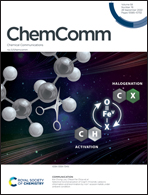Electrochemical performances of a LiFePO4-based heat-treated activated carbon electrode†
Abstract
Activated carbon was heat-treated to investigate the effect of heat-treating activated carbon on the power and long-term reliability characteristics of LiFePO4-based electrodes. As the heat-treatment temperature of the activated carbon increased, the surface area and total pore volume were decreased. In addition, oxygen functional groups were decomposed and the O/C ratio on the pore surface was reduced. The power and long-term reliability characteristics of the composite electrodes were improved by the use of heat-treated activated carbon, which probably resulted from an increase in the electrical conductivity of the electrodes as the bulk resistance and surface resistance of the heat-treated activated carbon decreased. The diffusion coefficient of the LFP/AC electrode was considerably increased due to the pores of activated carbon.



 Please wait while we load your content...
Please wait while we load your content...